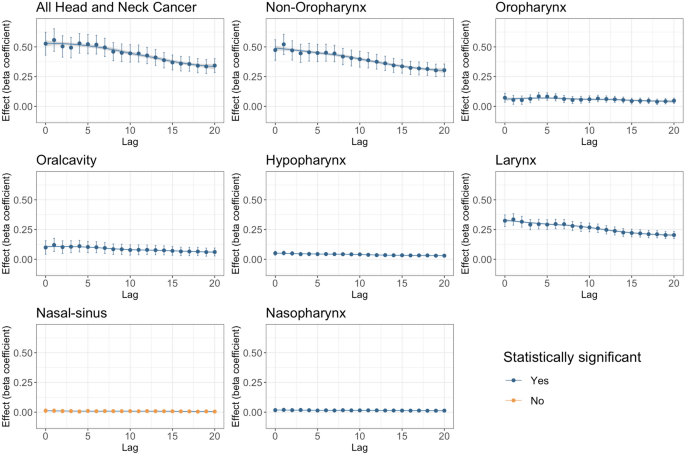Abstract
To investigate air pollution’s effect in the form of PM2.5 (particulate matter measuring less than 2.5 microns) on head and neck aerodigestive cancer incidence, an epidemiological cohort analysis was performed using data from the Surveillance Epidemiology and End Results national cancer database from the years 2002–2012. The relationship between US county mean PM2.5 levels and head and neck cancer (HNC) incidence rates were examined using a linear mixed model. Lagged effect of the pollutant’s effect on HNC incidence was analyzed. Our results showed a significant association between the incidence of HNC and certain subtypes with PM2.5 exposure after controlling for demographic characteristics, smoking and alcohol use. We observed the highest association at a 5-year lag period (β = 0.24, p value < 0.001). We observed significant associations at no lag (β = 0.16, p value = 0.02) and up to a 20-year lag period (β = 0.15, p value < 0.001). PM2.5 exposure is associated with an increased incidence of HNC, with the strongest association at a 5-year lag period. To better understand the relationships between exposure and cancer pathogenesis, further subgroup analysis is needed.



Damn. Get an air filter, everyone!